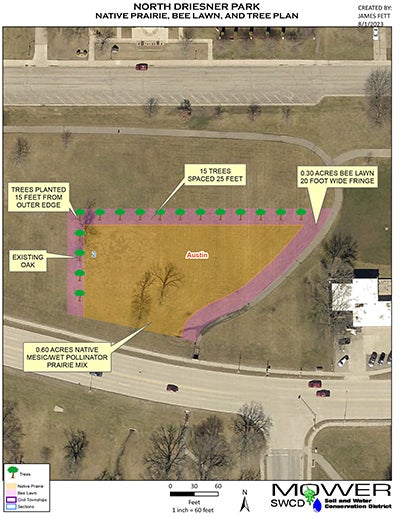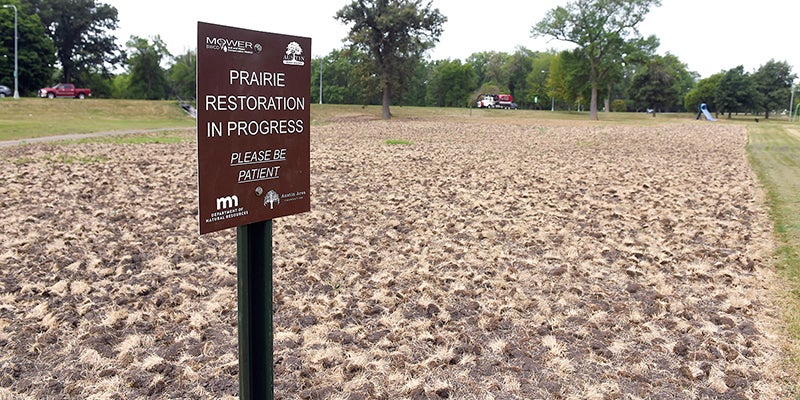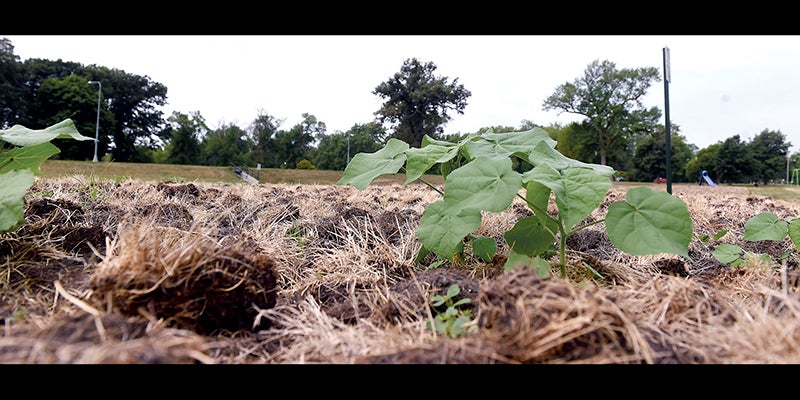Partnership introducing prairie grasses to Driesner
Published 6:03 pm Friday, August 11, 2023
|
Getting your Trinity Audio player ready...
|
A project similar to one started earlier this summer in Todd Park will bring more native grasses and flowers to the heart of Austin.
A joint venture between the Mower Soil and Water Conservation District and Austin Parks, Recreation and Forestry has started the process of changing a decent-sized chunk of North Driesner Park, just to the south of Queen of Angels, into native prairie.
Earlier this summer, the chunk of land was tilled up and the existing grass killed to start making way for the introduction of native grasses and flowers. Another kill will have to be done after the seeds of existing plants and weeds begin to take over before the native seeds can be introduced.
 “This site is kind of a test site with the city’s Parks and Recreation Department,” said Watershed Technician James Fett. “The idea is to look at the spaces that are regularly mowed and underutilized by the public.”
“This site is kind of a test site with the city’s Parks and Recreation Department,” said Watershed Technician James Fett. “The idea is to look at the spaces that are regularly mowed and underutilized by the public.”
The project is similar to the Todd Park project, that targeted grassy areas along Wolf Creek.
The Driesner project will also include a bee lawn around the fringe of the project, where plants will primarily be those varieties that are beneficial to pollinators. The Parks and Rec Department will also be picking out a variety of trees to be planted along that fringe.
When both sites are completed, the restored habitat will support different areas of nature.
“I think in this area in particular, the biggest benefit is habitat for native song birds and pollinators,” Fett said. “There’s also their food. It will be a really good food source and great to look at aesthetically.”
Fett said the project will be seeded with three types of native grasses, three native sedges and rushes and 30 types of flowers. The project is made possible through a grant from the Mower County Habitat and Pheasants Forever for up to $1,200 for the seeds.
The goal was to begin seeding this fall, but there within lies the primary challenge of the project. In a park that frequently experiences moist conditions, especially after rains, Driesner is feeling the effects of the current drought like everywhere else.
The dry conditions could push the seeding of the project until next spring.
“One thing we’ve learned is site preparation is extremely important,” Fett said. “We kill the grass, till it up, wait for the weed seeds in the ground to grow and kill them one more time.”
But the weeds, like the grass, aren’t growing.
“It’s been so dry we haven’t been able to get the second kill,” he added. “I’m not sure we’ll get to it by this fall.”
If the project is delayed to next year, Fett said they are looking at planting winter wheat as a temporary fill, wait for it to flourish and then kill that for the second round.
A restored area isn’t considered fully restored until year three of the project. Fett said the area will start seeing flowers in 2025 and that it won’t likely be considered fully established until 2026.
“Year one it sleeps, year two it creeps and year three it keeps,” Fett said.



